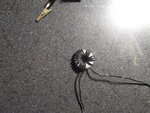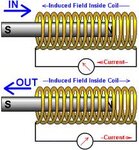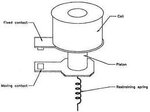thelaughingfool
Newbie level 5
I am attempting to build a solenoid and part of it involves building an electromagnet out of a hardware washer. As you might guess, it's not working. I know it's not that I'm using the wrong material or that I don't have enough power or turns in my winding. The washer is made of steel (or at least has enough iron for a permanent magnet to pick it up), and when I tested this on a small steel wrench, it worked acceptably. I used the same wire, power source, and number of turns in each case. It occurs to me that with the washer, there is no pole as there would be in the wrench due to the right hand rule. But I feel like that shouldn't make too much of a difference, and I should be getting some level of magnetism out of the washer. The design I need for the solenoid makes a washer the best option if possible. Can someone tell me what the problem here is and how I can fix it. In case it matters, the washer is about 1/8" thick, has an inner diameter of 1/4" and an outer diameter of 1/2"





